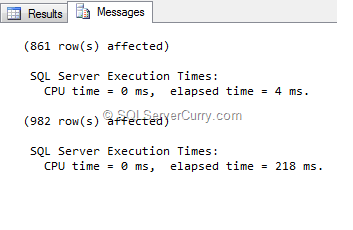We can analyze this using the STATISTICS TIME ON option. Consider the sys.objects and sys.columns catalog views and join them using INNER and LEFT joins and see the result
set statistics time on
select
t1.object_id, t2.object_id
from
sys.objects as t1 inner join sys.columns as t2
on t1.object_id=t2.object_id
select
t1.object_id, t2.object_id
from
sys.objects as t1 left join sys.columns as t2
on t1.object_id=t2.object_id
set statistics time off
The result is of SET STATISTICS TIME ON is

Note: You may think here that since the LEFT join returns more rows, so it is taking more time. Now eliminate the NULL object_ids from sys.columns and observe the result
set statistics time on
select
t1.object_id, t2.object_id
from
sys.objects as t1 inner join sys.columns as t2
on t1.object_id=t2.object_id
select
t1.object_id, t2.object_id
from
sys.objects as t1 left join sys.columns as t2
on t1.object_id=t2.object_id
where
t2.object_id is not null
set statistics time off
The result is

So even though they both return the same number of rows, INNER JOIN is still faster.

4 comments:
Hi.
Try to invert the order of execution. In my tests the first query always is faster then the second one.
In other test I write 4 times the same query. These are the results:
Tiempos de ejecución de SQL Server:
Tiempo de CPU = 0 ms, tiempo transcurrido = 0 ms.
(659 filas afectadas)
Tiempos de ejecución de SQL Server:
Tiempo de CPU = 0 ms, tiempo transcurrido = 1 ms.
(659 filas afectadas)
Tiempos de ejecución de SQL Server:
Tiempo de CPU = 0 ms, tiempo transcurrido = 114 ms.
(659 filas afectadas)
Tiempos de ejecución de SQL Server:
Tiempo de CPU = 0 ms, tiempo transcurrido = 137 ms.
Maybe you need a better way to meassure execution time.
Piwopx, Ok. Did you run the same for LEFT JOIN too?
Yes, I did.
If I run the execution plan of both queries the result is exactly the same.
Since this article is misleading, could you please edit or removed it?
Post a Comment